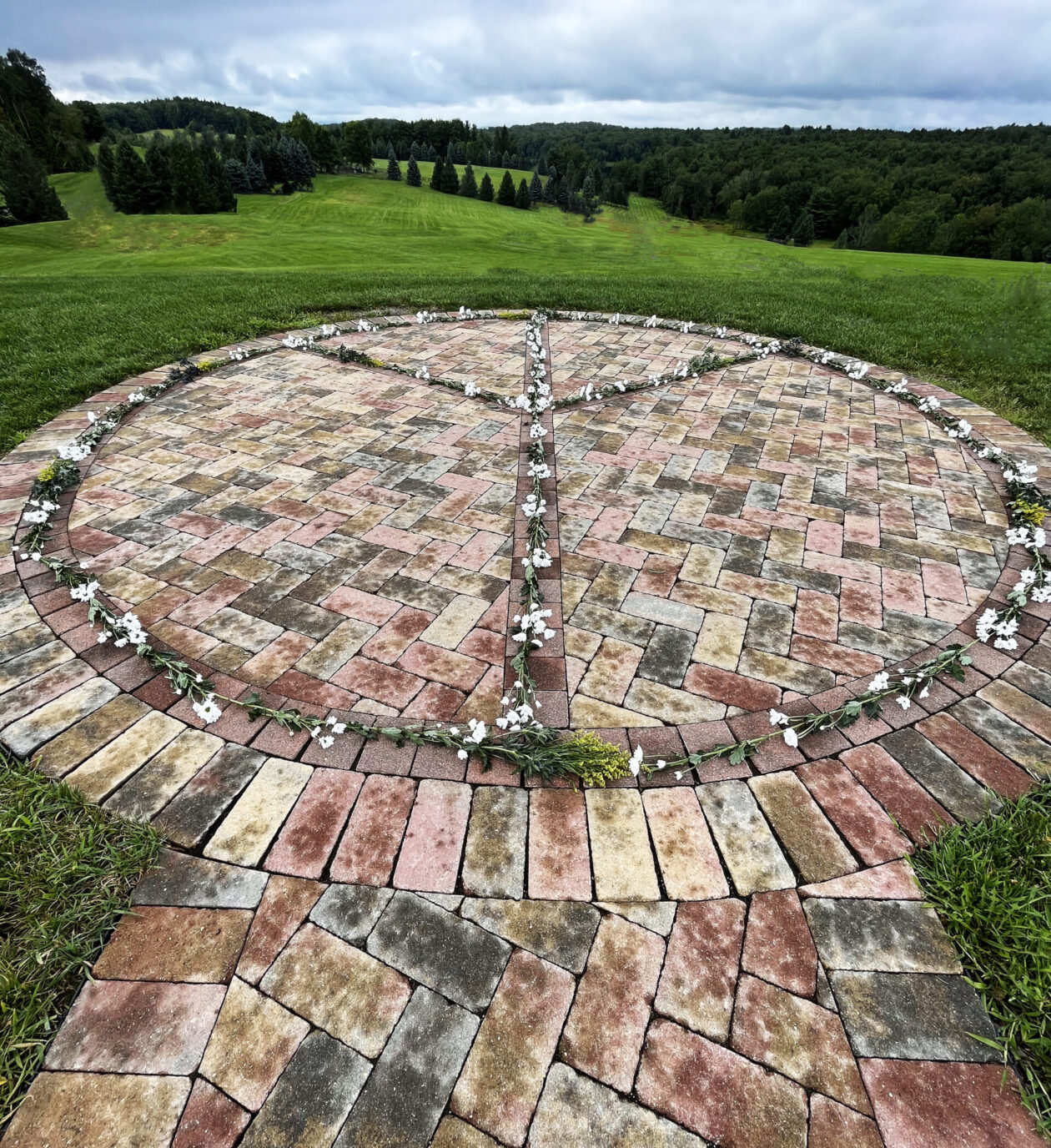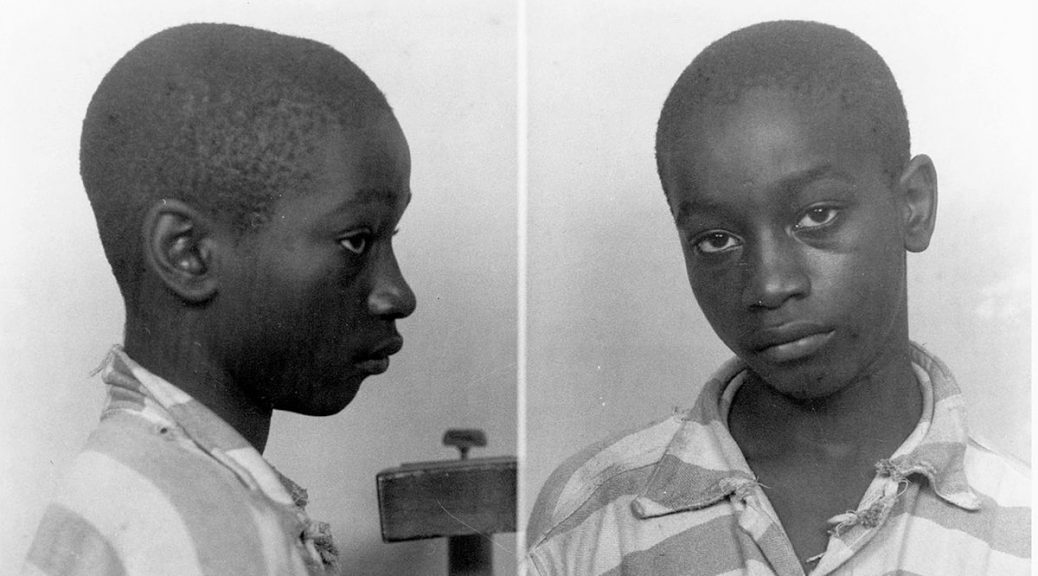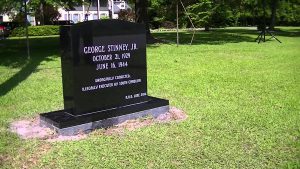SC Electrocutes George Stinney Jr
June 16, 1944
When deep racial hatred blinds a community, there will be miscarriages of justice. In the United States, such false accusations have happened regularly with black people young and old.
SC Electrocutes George Stinney Jr
George Junius Stinney , Jr
The story of George Junius Stinney, Jr is another tragic example of that ignorant hatred.
14-year-old George Stinney, Jr. lived in Alcolu, South Carolina with his father, George Stinney, Sr., mother Aime, brothers Charles, 12, and John, 17, and sisters Katherine, 10, and Aime, 7. George Sr. worked at the town’s sawmill. The family lived in company housing.
March 23, 1944
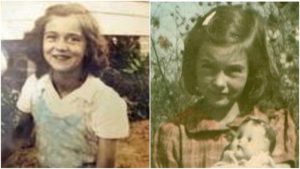 On the afternoon of March 23, 1944, Betty June Binnicker, 11, and Mary Emma Thames, 7, failed to return home. The next morning searchers, George Stinney, Sr among them, discovered the girls’ bodies lying in a water-filled ditch. Both girls’ skulls were crushed and one of the girl’s bicycles lay on top of their bodies.
On the afternoon of March 23, 1944, Betty June Binnicker, 11, and Mary Emma Thames, 7, failed to return home. The next morning searchers, George Stinney, Sr among them, discovered the girls’ bodies lying in a water-filled ditch. Both girls’ skulls were crushed and one of the girl’s bicycles lay on top of their bodies.
After a short investigation, police took George Stinney, Jr, and his brother John into custody. They released John, but a few hours later, Stinney confessed to murdering the girls.
The sawmill fired Stinney, Sr and the family had to move and rarely saw George, Jr again because his incarceration was 50 miles away.
SC Electrocutes George Stinney Jr
April 24, 1944
A mere 10 days later, the State tried Stinney for the girls’ murders. Records indicate 1,000 people crammed the courthouse. Blacks were not allowed inside.
The jury was all-white and the trial concluded that same day with Judge P.H. Stoll presiding. The court had appointed Charles Plowden as Stinney’s counsel. Plowden was a tax commissioner campaigning for a Statehouse seat.
Solicitor Frank McLeod represented the State. He presented evidence from law enforcement that Spinney confessed to the crime. While law enforcement testified that a confession occurred, no written confession exists in the record today. Nothing remains from documentary evidence indicating whether the court admitted a murder weapon, bloody clothes or other demonstrative evidence.
Plowden called no witnesses, did not cross examine, and never filed an appeal. No one challenged the sheriff’s recollection of the confession.
The jury deliberated 10 minutes and found Stinney guilty.
The same day Judge P.H. Stoll sentenced Stinney to death by electrocution.
The entire process had lasted two-hours.
No appeals were filed and no stays of execution requested.
SC Electrocutes George Stinney Jr
Last minute protest
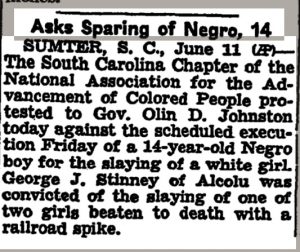 The day before the scheduled execution, the NAACP protested to Governor Olin D Johnston. The execution proceeded.
The day before the scheduled execution, the NAACP protested to Governor Olin D Johnston. The execution proceeded.
George Stinney, Jr electrocuted
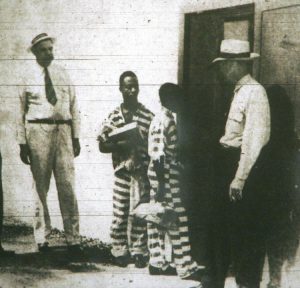 On June 16, 1944, Stinney became the youngest person to die in the electric chair and the youngest person executed in the United States in the 20th century. At 95 pounds, the straps don’t fit and an electrode was too big for his leg. His feet could not touch the floor.
On June 16, 1944, Stinney became the youngest person to die in the electric chair and the youngest person executed in the United States in the 20th century. At 95 pounds, the straps don’t fit and an electrode was too big for his leg. His feet could not touch the floor.
According to writer Joy James, as the first 2,400-volt surge of electricity hit Stinney, the mask covering his face slipped off, “revealing his wide-open, tearful eyes and saliva coming from his mouth.”
His family buried his burned body in an unmarked grave hoping the anonymity would allow him to rest in peace.
SC Electrocutes George Stinney Jr
70 years, 5 months, 29 days later
On December 17, 2014 South Carolina Circuit Judge Carmen T. Mullen vacated Stinney’s murder conviction. Judge Mullen called it a “great and fundamental injustice,.”
Mullen did not rule that the conviction of Mr. Stinney for the murder of two white girls was wrong on the merits. She did find, however, that the prosecution had failed in numerous ways to safeguard Swinney’s constitutional rights from the time police took him into custody until his death by electrocution.
The all-white jury could not be considered a jury of the teenager’s peers, Judge Mullen ruled, and Stinney’s court-appointed attorney did “little to nothing” to defend him. Stinney’s confession was most likely coerced and unreliable, Mullen added, “due to the power differential between his position as a 14-year-old black male apprehended and questioned by white, uniformed law enforcement in a small, segregated mill town in South Carolina.” [full NYT article]
SC Electrocutes George Stinney Jr
Continued blindness
Frankie Bailey Dyches, the niece of one of the victims, disagreed. “I believe that he confessed,” said Dyches, who was born after the 1944 killings. “He was tried, found guilty by the laws of 1944, which are completely different now — it can’t be compared — and I think that it needs to be left as is.”
The Conservative Headlines site has stated, “Make no mistake: George Stinney Jr was 100% guilty. The white Marxists, the media, and black power groups are perfectly comfortable pretending like he is innocent to advance their political agenda. They are completely comfortable spitting on the graves of two little dead girls. To advance the cause of the far-left, murderous thugs are converted into saints and innocent victims into criminals.”
In 2014, the A.N.D. erected a marked grave.
